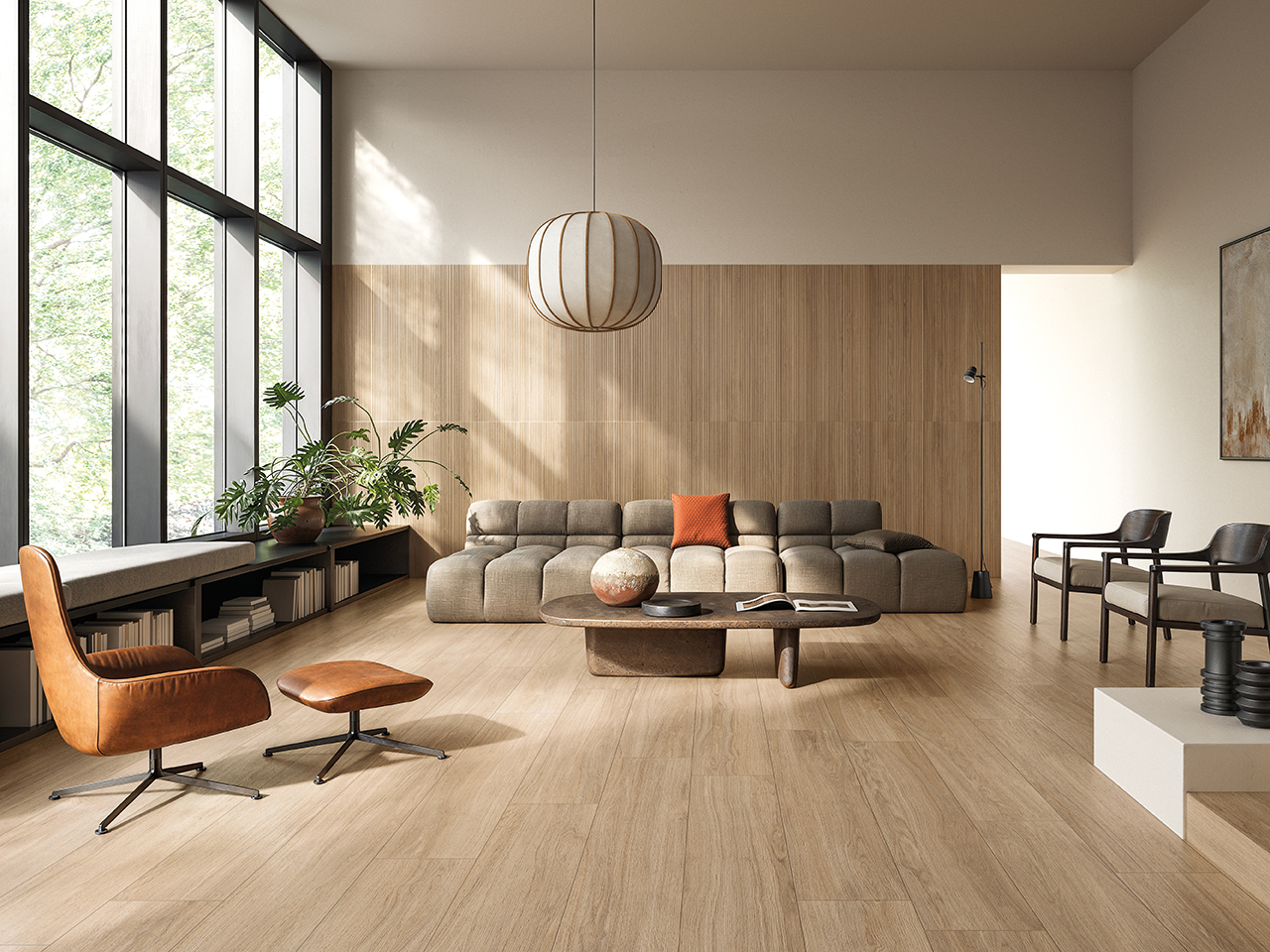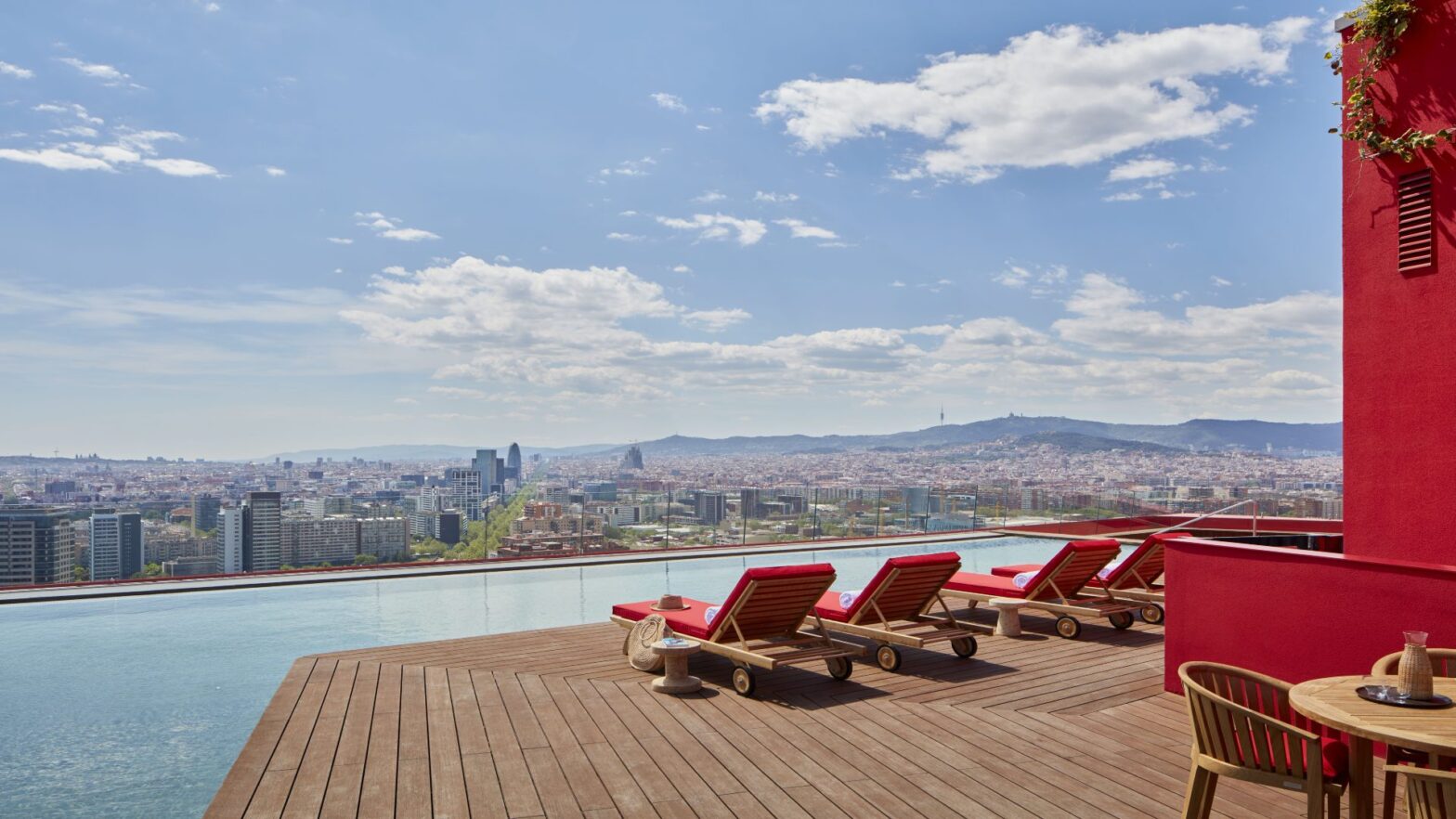Textured porcelain tiles: adding depth and character to minimalist interiors

Minimalist interiors have gained popularity for their emphasis on simplicity, functionality, and a clutter-free environment. However, achieving a warm and inviting atmosphere within this design philosophy can sometimes be challenging.
One effective way to enhance the aesthetic appeal of minimalist spaces is through the incorporation of textured porcelain surfaces. These elements not only elevate the visual interest of a room but also maintain the core principles of minimalism, allowing for a harmonious balance between style and functionality.
Understanding minimalism in interior design
Minimalism is characterised by a “less is more” approach, where the focus is on open spaces, natural light, and a restrained colour palette.
This design style promotes serenity and clarity, often relying on essential furnishings and decorative elements. While the aim is to create a tranquil environment, incorporating various textures can prevent these spaces from feeling sterile or monotonous.
By introducing textured surfaces, designers can add depth and warmth, transforming a simple room into an inviting retreat.
The role of texture in minimalist design
The introduction of textured surfaces in a minimalist interior creates a sensory experience, making spaces feel more engaging and welcoming. Different finishes, such as matte, embossed, or ridged, can be strategically used to enhance the overall design without overwhelming the viewer.
The psychological impact of texture cannot be overlooked. It adds character and dimension to a space, helping to create a more lived-in atmosphere. Subtle variations can complement the clean lines and open spaces typical of minimalist interiors, providing a perfect counterbalance to the simplicity of the design.
Benefits of textured porcelain surfaces
One of the primary advantages of using textured materials in minimalist interiors is their durability. These surfaces are engineered to withstand daily wear and tear, making them ideal for high-traffic areas. Additionally, they are easy to maintain, ensuring that they retain their aesthetic appeal over time.
The versatility of textured options is another significant benefit. Available in a wide range of styles, colours, and finishes, these materials allow for creative expression while adhering to minimalist principles. Designers can choose from various textures to create unique visual narratives that enhance the character of the space.
Moreover, textured surfaces can transform the overall look and feel of a room. By introducing tactile elements, homeowners can achieve a layered aesthetic that remains true to minimalist ideals, adding richness without compromising simplicity.
Incorporating textured surfaces into various spaces
There are numerous ways to utilise textured options throughout a minimalist home. In living areas, these surfaces can serve as feature walls, fireplace surrounds, or accent pieces, drawing the eye and adding interest to the design. In bathrooms, they can elevate the shower area, walls, or flooring, creating a spa-like ambience that feels both luxurious and serene.
Kitchens can also benefit from the addition of textured materials, particularly as backsplashes, countertops or flooring options. These surfaces not only contribute to the overall aesthetic but can also provide functional advantages, such as improved grip in areas prone to spills.
When incorporating textured elements, it is crucial to select complementary furnishings and decor that enhance the overall aesthetic. By choosing pieces that harmonise with the textures, homeowners can create a cohesive design that feels both sophisticated and inviting.
Tips for choosing and styling textured surfaces
Selecting the right textures is key to achieving a minimalist vision. It is advisable to balance textured surfaces with smoother elements, ensuring harmony within the space. For instance, pairing a textured wall with sleek, minimalist furniture can create an effective visual contrast that enhances the room’s appeal.
In terms of colour, coordinating shades that complement the textured surfaces can unify the design. Opt for a muted colour palette that reflects the principles of minimalism while allowing the textures to take centre stage. This approach ensures that the room feels cohesive, stylish, and inviting.
The charm of porcelain surfaces: Ceramiche Refin’s excellence
With over 60 years of expertise in porcelain stoneware, Ceramiche Refin has become a prestigious reference for both businesses and individuals seeking quality and innovation. The brand’s collections, the result of continuous research, offer versatile solutions that seamlessly integrate style and functionality into residential and commercial settings.
Ceramiche Refin’s philosophy is deeply rooted in the values of Italian craftsmanship, not only as an aesthetic expression but as a production model that combines tradition, culture, and a strict work ethic. The company is also committed to sustainability, adopting eco-friendly production processes and using recyclable materials to support environmentally responsible practices.
Ceramiche Refin’s Italian porcelain tiles are designed to transform any living space with the distinctive charm of Made in Italy style. From bathroom and kitchen tiling to outdoor and commercial options, these solutions offer new perspectives on interior design.
Among the most recent offerings is EIK, a wood-effect porcelain stoneware line. Featuring delicate, irregular veins and free from visible knots or imperfections, it offers a uniform and lightweight graphic design that provides a modern and sophisticated look, perfect for prestigious settings.
ETHEREA is a stone-effect collection that synthesises the excellence of various natural stone materials. Its delicate, minimalist surfaces feature slight halos and subtle fossil traces, creating a uniform appearance that evokes timeless purity and simplicity.
GRAYN, on the other hand, softens the rigidity of cement with a dynamic texture enriched by subtle irregularities, adding depth and movement to the surface. Its design blends uniform areas with fine granularity and light ripples, making it ideal for larger spaces.
Finally, UPSIDE represents a fusion of colour, brilliance, and design. Based on the 2011 BESIDE mosaic by Massimiliano Adami, it has evolved into a highly decorative collection that stands out for its bold visual impact.



















